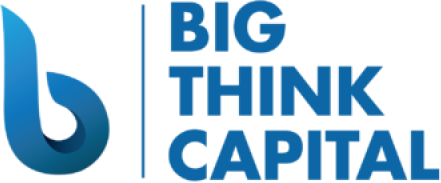Maximizing Your Small Business Funding Opportunities Amidst Rising Interest Rates
Estimated Reading Time: 5 minutes
- Understand the impact of rising interest rates on funding.
- Develop a robust credit management strategy.
- Utilize digital cash flow tools for better financial health.
- Stay informed about market trends and conditions.
- Leverage technology to enhance cash flow management.
Table of Contents
- Understanding the Interest Rate Landscape
- Developing a Robust Credit Management Strategy
- Harnessing Digital Cash Flow Tools
- Practical Takeaways for Business Owners
- Conclusion
Understanding the Interest Rate Landscape
The Federal Reserve’s recent moves to increase interest rates have made headlines, signaling shifts in the borrowing costs for businesses. According to the Federal Reserve Economic Data (FRED), the average interest rate for a commercial loan has climbed, with rates hovering around 6% in early 2025. Higher interest rates can deter business owners from applying for loans or lead them to seek alternative funding methods. This is particularly true for small businesses which may struggle to manage increased repayment obligations.
Recognizing the impact of rising interest rates is crucial for small business owners. Here are relevant points to consider:
- Higher Borrowing Costs: Loans become more expensive, which can limit cash flow.
- Increased Approvals Difficulties: Lenders may tighten their criteria, making it harder to receive loan approvals.
- Shifted Financing Options: Higher rates may drive businesses to explore alternative financing solutions.
Developing a Robust Credit Management Strategy
In a climate of rising interest rates, having a strong credit management strategy is key. Effective management of credit can enhance your ability to secure financing and reduce costs over time. Here are some practical steps business owners can take:
- Review Your Credit Profile: Start by examining your business credit reports. Make sure to check for errors and ensure that your credit utilization ratio remains low. Tools like Nav can provide insights into your business credit score and the factors influencing it.
- Pay Bills on Time: Establish a system to ensure timely payment of all invoices and obligations. Late payments can seriously damage your credit score, leading to higher interest rates on future loan requests.
- Limit New Credit Applications: Each credit inquiry can affect your score, so avoid applying for several loans simultaneously. Focus on securing credit that is strategically beneficial for your business.
- Maintain Strong Relationships with Lenders: Building a rapport with lending institutions can position your business favorably when financing becomes necessary. Take the time to communicate regularly and express your financial track record.
- Diversify Your Credit Sources: Exploring various credit options can help you respond flexibly to changing conditions. Consider maintaining lines of credit from different sources, such as traditional banks, alternative lenders, and peer-to-peer platforms.
Harnessing Digital Cash Flow Tools
As many businesses shift to digital solutions, utilizing technological tools to manage cash flow effectively has become more essential than ever. Here are some tools and strategies to consider:
- Cash Flow Management Software: Solutions like QuickBooks and FreshBooks can help track cash flow, manage expenses, and forecast financial health. Understanding cash dynamics will help in making informed financial decisions.
- Invoice Factoring: If you experience delayed payments from customers, consider invoice factoring. This method allows you to get advances on your outstanding invoices, thus improving your cash flow without taking on debt.
- Payment Processing Solutions: Streamlined payment processing can reduce the time it takes to collect payments. Services like Square or PayPal enable businesses to accept payments quickly and easily, which can be crucial for maintaining cash flow.
- Digital Expense Management: Tools like Expensify can help track expenses more effectively, making it easier to identify areas where you can cut costs and allocate funds efficiently.
- E-commerce Strategies: If you run a retail business, investing in e-commerce can create new revenue streams. Consider enhancing your online presence through well-designed websites and social media marketing.
Practical Takeaways for Business Owners
As small business owners navigate the complexities of funding in a high-interest environment, here are three practical takeaways:
- Stay Informed: Keep abreast of interest rate trends and economic conditions that could impact borrowing. Utilize resources from the Federal Reserve and financial news platforms to stay knowledgeable about market changes.
- Optimize Your Financial Health: Regularly review your financial statements and creditworthiness. A robust financial profile will improve your negotiation position with lenders, allowing you to secure more favorable terms.
- Leverage Technology: Embrace digital tools and platforms that facilitate stronger cash flow management. Invest time in researching and implementing solutions that fit your business needs.
Conclusion
The evolving financial landscape in 2025 presents both challenges and opportunities for small business owners. While rising interest rates can complicate funding efforts, mastering credit management and utilizing digital cash flow tools can enhance borrowing capabilities. At Big Think Capital, we specialize in helping businesses navigate the funding landscape, providing access to a variety of financial products, from working capital advances to SBA loans.
If you are interested in maximizing your funding opportunities or need guidance on financial strategies, visit bigthinkcapital.com to learn more or speak with one of our funding experts today. Empower your business to thrive amidst rising interest rates and seize the available financial opportunities.
FAQ
Q: How can I improve my credit score as a small business owner?
A: Regularly review your credit reports, pay your bills on time, and limit new credit applications to improve your credit score.
Q: What alternatives can I consider for business funding?
A: Consider options like crowdfunding, peer-to-peer lending, invoice factoring, and maintaining credit lines with different lenders.
Q: How do digital cash flow tools help my business?
A: Digital cash flow tools streamline operations, help track expenses, and improve payment collection efficiencies, enabling better financial decision-making.






